List of largest craters in the Solar System facts for kids
The Solar System is a busy place, and sometimes, space rocks like asteroids and comets crash into planets and moons. When these collisions happen, they leave behind huge bowl-shaped holes called impact craters. These craters are like giant scars that tell us about the history of our cosmic neighborhood. Some of these craters are so big they can cover entire regions of a planet or moon!
This article will take you on a tour of some of the largest impact craters found on different worlds in our Solar System. Get ready to explore these incredible marks from ancient space collisions!
Contents
Exploring Giant Craters in Our Solar System
What Are Impact Craters?
Impact craters form when a fast-moving object from space, like an asteroid or a comet, slams into the surface of a larger body. The energy from this crash is enormous! It blasts away material, creating a deep hole with a raised rim. Over millions or even billions of years, these craters can change. They might get filled with lava, ice, or water, or get worn down by wind and weather, especially on Earth.
The Solar System's Biggest Impact Scars
Below is a list of some of the most massive impact craters we know of across the Solar System. You'll see how big they are compared to the planet or moon they hit. It's amazing to think about the power of these ancient impacts!
| Planet or Moon | Crater Name | Crater Size (km) | Planet/Moon Size (km) | Size Compared to Body | Look Closely! | Cool Facts |
|---|---|---|---|---|---|---|
| Mercury | Caloris | 1,550 km | 4,880 km | 32% | 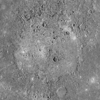 |
One of the largest impact basins in the Solar System. |
| Rembrandt | 715 km | 15% | 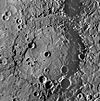 |
A younger, well-preserved crater. | ||
| Venus | Mead | 280 km | 12,100 km | 2% | 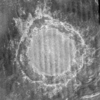 |
The largest crater on Venus. |
| Earth | Vredefort | 250–300 km | 12,740 km | 2% | 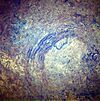 |
One of the oldest and largest impact structures on Earth. |
| Chicxulub crater | 182 km | 1.4% | 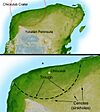 |
Thought to be the cause of the dinosaur extinction. | ||
| Sudbury Basin | 130 km | 1% |  |
A very old and eroded impact structure. | ||
| Moon (Earth's moon) |
Procellarum | 3,000 km | 3,470 km | 86% | 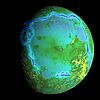 |
Scientists are still studying if this was an impact basin. |
| South Pole–Aitken basin | 2,500 km | 70% | 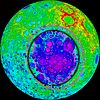 |
One of the largest and deepest impact basins in the Solar System. | ||
| Imbrium | 1,145 km | 33% |  |
A prominent lunar "sea" formed by an ancient impact. | ||
| Mars | North Polar Basin | 10,600 × 8,500 km | 6,780 km | 125–155% |  |
Scientists are still studying if this was an impact. |
| Utopia | 3,300 km | 50% |  |
The biggest confirmed impact crater on Mars and in our Solar System! | ||
| Hellas | 2,300 km | 34% |  |
The largest crater we can easily see in the Solar System. | ||
| Isidis | ~1,900 km | 28% |  |
Parts of it are worn away over time. | ||
| Argyre | 1,700 km | 25.1% |  |
Might have an even bigger outer ring. | ||
| Vesta (asteroid) | Rheasilvia | 505 km | 529 km (569 km) | 90% | 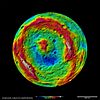 |
This crater is so big it almost covers the entire asteroid! |
| Veneneia | 395 km | 70% |  |
Hidden a bit by another giant crater, Rheasilvia. | ||
| Ceres (dwarf planet) | Kerwan | 284 km | 952 km | 30% | 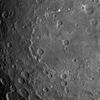 |
A wide, shallow crater, hard to spot. |
| Yalode | 271 km | 28% | 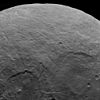 |
|||
| Hygiea (asteroid) | Serpens | 180 km | 434 ± 14 km | 40% |  |
|
| Ganymede (moon of Jupiter) |
Epigeus | 343 km | 5,270 km | 6.5% | 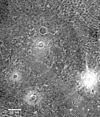 |
|
| Callisto (moon of Jupiter) |
Valhalla | 360 km | 4,820 km | 7.5% |  |
A famous multi-ring basin. |
| Heimdall | 210 km | 4% | We don't have clear pictures of this one yet. | |||
| Mimas (moon of Saturn) |
Herschel | 139 km | 396 km | 35% | 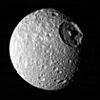 |
This crater is so big it makes Mimas look like a famous space station! |
| Tethys (moon of Saturn) |
Odysseus | 445 km | 1,060 km | 42% | 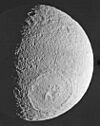 |
A very large, flat-bottomed crater. |
| Dione (moon of Saturn) |
Evander | 350 km | 1,123 km | 34% | 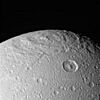 |
|
| Rhea (moon of Saturn) |
Mamaldi | 480 km | 1,530 km | 31% | 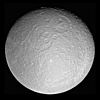 |
|
| Tirawa | 360 km | 24% | 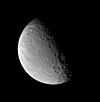 |
|||
| Titan (moon of Saturn) |
Menrva | 392 km | 5,150 km | 7.5% |  |
One of the few impact craters seen on Titan's hazy surface. |
| Iapetus (moon of Saturn) |
Turgis | 580 km | 1,470 km | 40% |  |
|
| Engelier | 504 km | 34% | 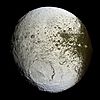 |
|||
| Gerin | 445 km | 30% | 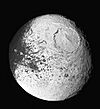 |
Another crater, Engelier, formed on top of Gerin. | ||
| Falsaron | 424 km | 29% |  |
|||
| Titania (moon of Uranus) |
Gertrude | 326 km | 1,580 km | 21% | 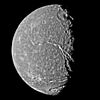 |
We haven't seen much of Titania, so there might be even bigger craters there! |
| Pluto (dwarf planet) | Sputnik Planitia basin | ca. 1,300 km | 2,377 km | 54.7% | 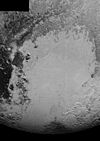 |
Filled with moving nitrogen ice and worn down over ages. |
| Burney | 296 km | 12.5% |  |
Very old and hard to see clearly. | ||
| Charon (moon of Pluto) |
Dorothy | ca. 261 km | 1,207 km | 21% | 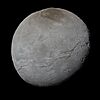 |
This crater overlaps with a dark region called Mordor Macula. |
See also
- List of Solar System extremes
- List of largest lakes and seas in the Solar System
- List of largest rifts and valleys in the Solar System
- List of tallest mountains in the Solar System

